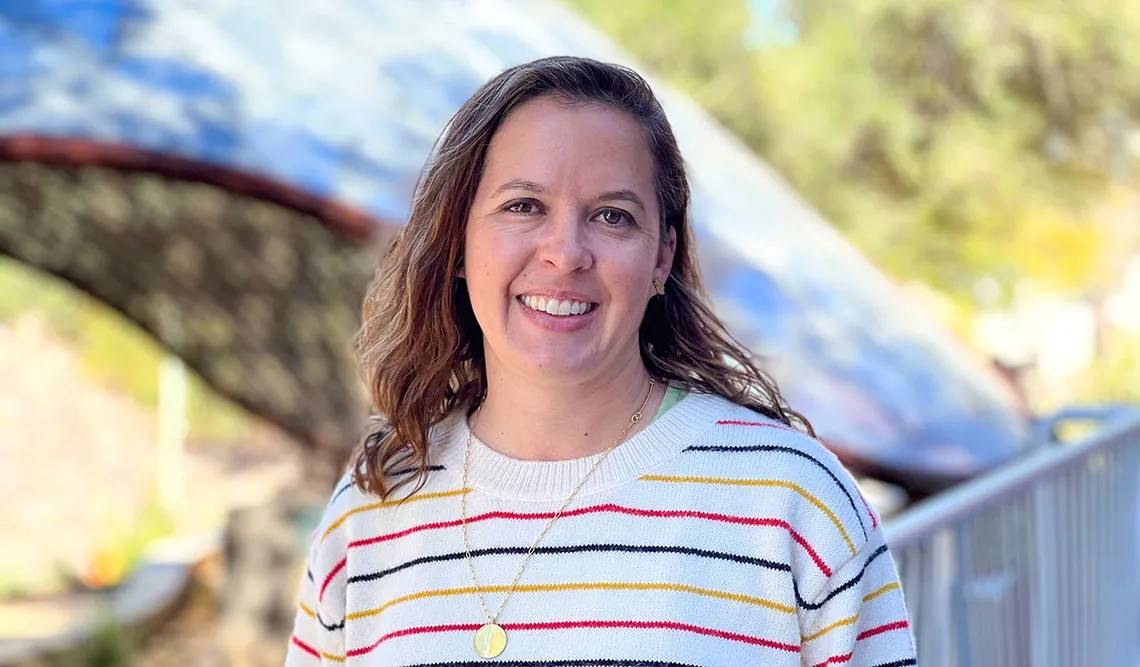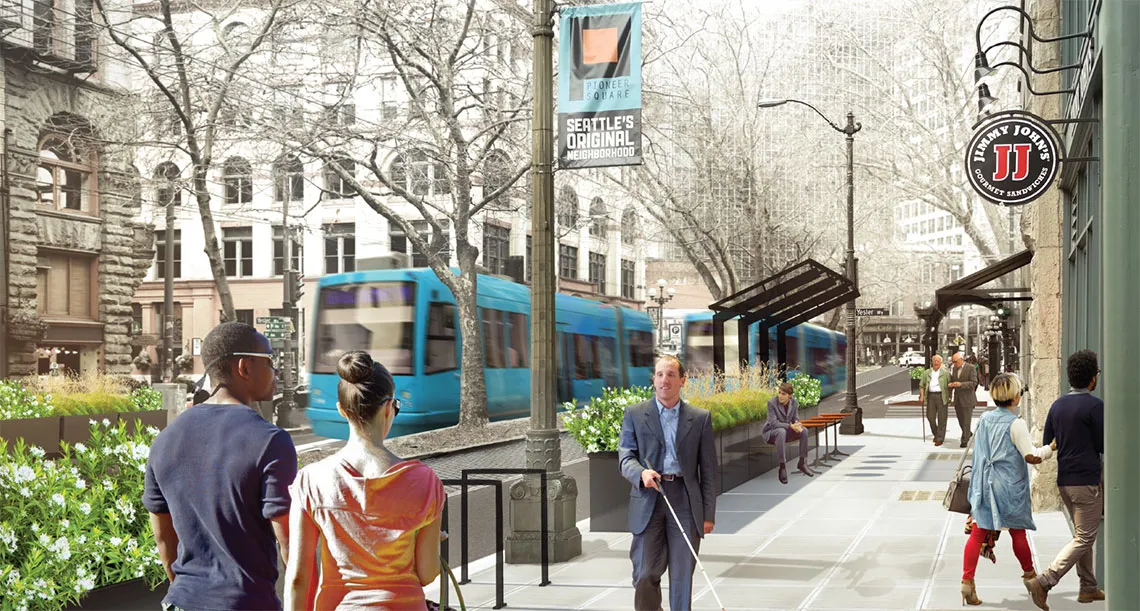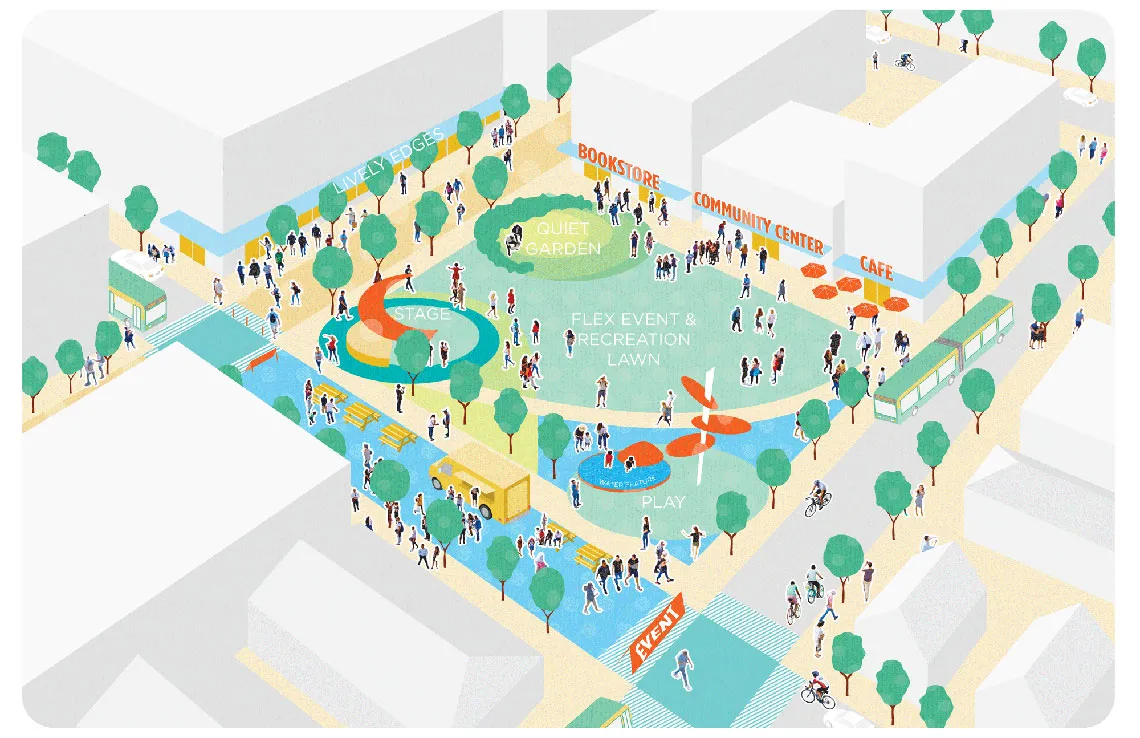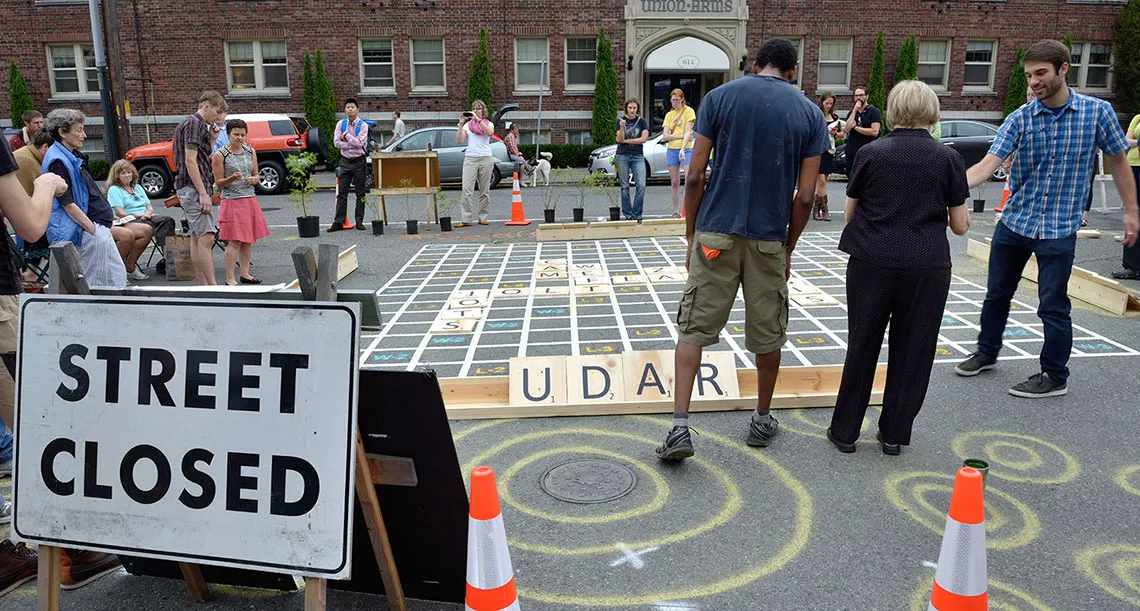Creating Spatial Justice: Mackenzie Waller, Assistant Professor of Landscape Architecture

Six Questions with Mackenzie Waller, Assistant Professor of Landscape Architecture
“My current research builds off my ongoing interest in environmental/spatial justice and interdisciplinary collaboration. The overarching investigation is to understand how practitioners, educators and advocates for spatial justice create sustainable resistance through the tools of joy, play and celebration.”
What brought you to CAPLA and the School of Landscape Architecture and Planning?
I’m thrilled to be here. Big thanks to the Indigenous peoples of Tucson, both past and present, the O’odham and the Yaqui. CAPLA and the School of Landscape Architecture and Planning are guided by strong leadership with a clear focus on sustainable and equitable design and planning, which aligns with my values. Plus, there’s the bonus of a jaw-dropping landscape and diverse city.

The final street concept designs for the historic Seattle neighborhood of Pioneer Square funneled mapped data, public input and guidance from disabilities consultants to provide urban design guidelines that centered accessibility, legibility and celebrating historic character. Image courtesy Mackenzie Waller.
What is your current research and what most excites you about this work?
My current research builds off my ongoing interest in environmental/spatial justice and interdisciplinary collaboration. The overarching investigation is to understand how practitioners, educators and advocates for spatial justice create sustainable resistance through the tools of joy, play and celebration. I’m working now with a group called Placemaking X to coordinate a series of “Tooltestings” around placemaking in response to climate change.
Tell us about your current practice.
This summer I will be working with a stellar team of practitioners who focus on urban planning, housing, social work and Indigenous activism to develop a set of design and planning recommendations for the Pike and Pine corridor in downtown Seattle, Washington. This area is slated for some major transportation projects in the near term but is really an epicenter for impact of the economic and racial inequalities that have been exacerbated during the pandemic. This is in alignment with much of my previous project work and teaching, which I welcome folks to check out at broad.design.

The Imagine Greater Downtown project was an opportunity to communicate to Seattlites the design and planning trajectories envisioned by county, city and state agencies in an accessible and user friendly format. Image courtesy Mackenzie Waller.
What are you teaching this semester, and what do you most enjoy about teaching?
I am teaching a Bachelor of Landscape Architecture design studio this semester called BEE City Studio. Often people think of arid regions as lacking, but in fact Arizona contains the most diversity of bees in the country, and perhaps the world. (Learn more about Tucson native bees at the Tucson Bee Collaborative: tucsonbeecollaborative.com.)
The studio allows students to design projects that protect, enhance and expand the places native bees need within the city limits. The field of landscape architecture has the potential skills and knowledge to both participate in and lead the effort to explore Tucson as a “Bee City,” a model of urban native bee habitat. The students are encouraged to work across scales from the very tiny bee-sized spaces (01_XS) and regional (02_XL), to the intermediary (03_L and 04_M). We’d love to have folks come see their work at our mid-semester and final reviews, so keep an eye out for us.
Beyond research, teaching and practice, what are your passions?
I am new to Tucson, but very active in the LGBTQ+ community. My own queer identity and exploring and supporting our cultures is a very joy-filled and fueling aspect of my life. For students who might need an ear, you’ve got a safe space and a listening ear available to you anytime, whether I’ve met you before or not. Drop on by or email me at wallerm@arizona.edu.

The community at an oversized three-street intersection in First Hill neighborhood of Seattle couldn't imagine anything other than cars in their street right-of-way. In order to open their minds to the potential of a future with a public park to replace this street, we hosted an oversized street word game that targeted the primary neighborhood demographics of an aging-in-place population and young workers. There is now a parklet at this location that is slated for full park design by the city in the near future. Image courtesy Mackenzie Waller.
What advice do you have for new or current CAPLA students?
There are so many opportunities to explore and learn, treat one another well and look for opportunities to connect and work in an interdisciplinary fashion—that is our best bet for a shared future that answers the grand challenges of our time. Our individual expertise are most impactful when leveraged in a collaborative environment; otherwise our designs and plans run the risk of becoming myopic and constricted.



